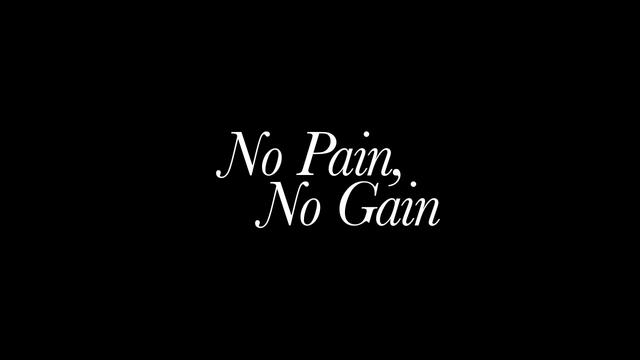Not everyone gets a moment of divine intervention or a red flag to guide them to their passion.
I was one of the lucky few where my passion hit me like a ton of bricks, quite literally. I tore my ACL, my MCL, and quite possibly a few other parts of me in a skiing accident. Prior to that, I was your typical young professional: keen, excitable, and climbing the corporate ladder. I knew I wasn’t happy in my consulting job; I would wake up thinking, “oh boy, another day in a dingy office and stale take-out at the hotel.”
But honestly, who really is in love with their job?
[ad_bb1]
When I was lying in the hospital, I knew my slightly boring albeit quite respectable life was changed. I couldn’t go jogging, do yoga, or go rock climbing anymore. I couldn’t even look forward to travelling to my next not-so-exotic destination for work because of a doctor-prescribed travel ban. I went on disability leave and, for once in my life, was faced with endless amounts of leisure time and nothing to do.
I launched my start up because I wanted to find something to do with my time, try new hobbies, and take classes without paying $20-50 for every new class. And now it’s grown to a team of eight, angel funded, and slowly becoming a solid product I’m proud to call my own. I am really in love with my job.
But not everyone gets the luxury of receiving a debilitating injury to guide them to their passion. This is a guide for dreamers and adventure seekers who want to find their passion.
Step 1: No Pain, No Gain
People today are often deceived by articles like this telling them to pursue their passion. The ‘P word’ has become such a buzzword that the fundamental meaning has been lost by everyone telling you to drop everything and pursue it. The Webster’s Dictionary defines passion as:
1. A strong feeling of enthusiasm or excitement for something or about doing something
2. A strong feeling that causes you to act in a dangerous way
The first definition is probably what most people mean when they say passion. The second definition is what you should take away from this guide.
You can’t pursue your passion by not taking risks and making sacrifices. There are only 168 hours in a week, 60 of which should be dedicated to sleeping, 21 for eating and bathing, 40 for work, and 7 for commuting. That leaves 40 hours a week to try to pursue your passion. Yay, enough time for a second full-time job, right?
Nope.
Taking out time for socializing, working out, relaxing and watching TV, most people have no more than 10 hours a week to dedicate to their passion. If you believe in Malcolm Gladwell’s 10,000 hour rule, that means you need almost 20 years to master your passion. Something’s gotta give. It’s your responsibility to figure out what your priorities are and what you are willing to forsake for passion.

Step 2: Know Thyself
Who knows you better than yourself? Surprisingly, a lot of people do. Psychologists note that we cannot view ourselves objectively and often have blind spots to our ego. Sometimes we are so caught up in the act of living that we stop observing ourselves as individuals. Millennials are going through so many exciting changes and fluctuations in their lives that they lack the clarity to know where to even start looking for their passion. It’s often hard to separate interests with passion. Here are some exercises to help you understand yourself better, from an objective point of view.
Keep a Journal
Taking five minutes to jot down your activities, thoughts and musings of the day before bed allows you to track your progress sequentially. Using a journal, you can reflect back on things you like, things you don’t, and recall things that inspire you.
360-Degree Feedback
For many companies, evaluations are done with input from an employee’s work circle. Ask your friends, colleagues, and family on things that they think you excel seem passionate about. Sometimes they will surprise you with their insights.
Build Your Interests & Hobbies
Having experienced many hobbies and activities will let you accumulate a list of interests. The biggest problem with millennials’ pursuit of passion is the question of limited experiences. So counteract that by trying something new every day, figure out what works for you and what doesn’t, and sooner or later you will be able to establish a better understanding of what makes you fired up.

Step 3: Identify Your Passion
People often assume that those pursuing their passion are stress-free, excited for work, and and live in pure emotional bliss. In actuality, most people who say they are working on their passion face the same challenges as before.
The key difference is you have a better idea of what you are working towards. Pursuing your passion is often misconstrued to equate to entrepreneurship, but while many entrepreneurs are passionate about their life, there are many people following their passion in a 9 to 5 job. You can pursue your passion in the job you have right now as long as your work is aligned with your long-term goal.
Identifying your passion also means figuring out a long-term goal that you know will give you a sense of accomplishment. For me, it’s creating a company or a product I can be proud to let my friends use. For others, it’s climbing the corporate ladder and being an influential leader. Passion makes you take risks, for better for worse, and you need to figure out what you are taking on that risk for.

Step 4: Don’t Go on a Blind Pursuit
Cameron Chell, CEO of Business Instincts Group, said it best: “Pure passion is amazing, but more often than not without experience and the humility that comes with it, one mistakes the drive of ego for passion. Awareness and discernment of this are key to avoiding failure and building sustainable success.”
As every successful entrepreneur, start-up guru, and business executive will tell you, you should absolutely pursue your passion. However, when you do, be sure you can accept the risks, and thrive with the uncertainty. Be tenacious, be fearless, and passion will come to you.

[ad_bb2]

